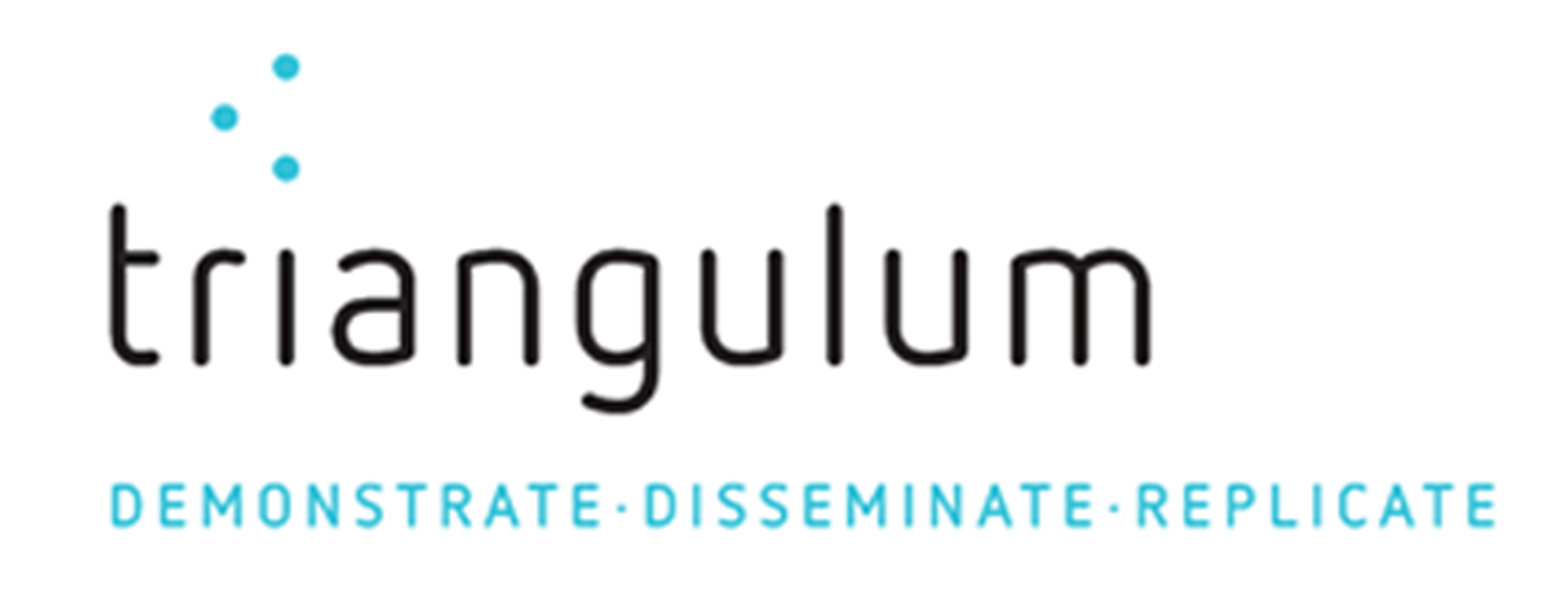The Triangulum project has ended in January 2021 after five successful project years.
For further information and updates of the project, please visit the following pages:
The Triangulum project has ended in January 2021 after five successful project years.
For further information and updates of the project, please visit the following pages:
The replication work of Triangulum was based on three pillars:
•1. Demonstration projects in the three Lighthouse Cities helped to showcase how public and private partners can collaborate to create solutions that make cities better places to live.
•2. Triangulum assessed the demonstration projects to generate a robust evidence base describing their impacts and benefits.
•3. Triangulum developed a business model based upon the value of these benefits that enables their replication without public funding in the Follower Cities and beyond.
Main objectives of the Smart City Framework
• Streamline ICT integration of the three Lighthouse Cities to speed up planning and implementation.
• Design a replication framework and a decision- making tool for Smart City project development and implementation.
• Apply parts of this framework to accelerate the replication process in Follower Cities and beyond.
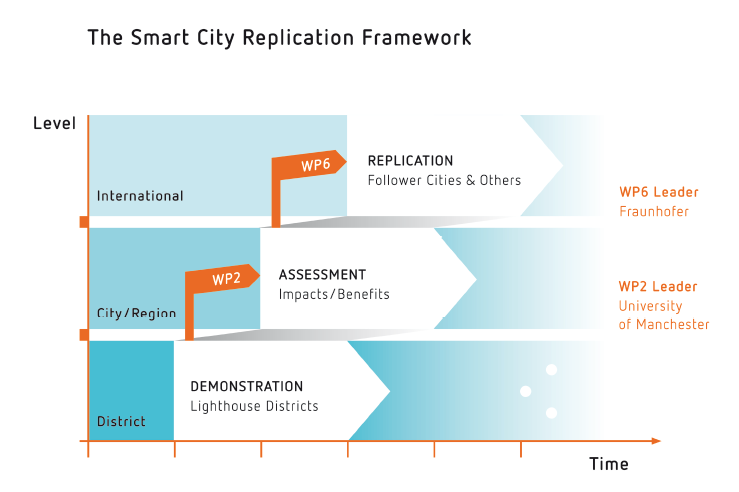
The replication process is structured in two ways:
• A customer centric approach supporting the Implementation Strategies of the Follower Cities.
• A technology transfer approach that allows replication by cities and other partners.
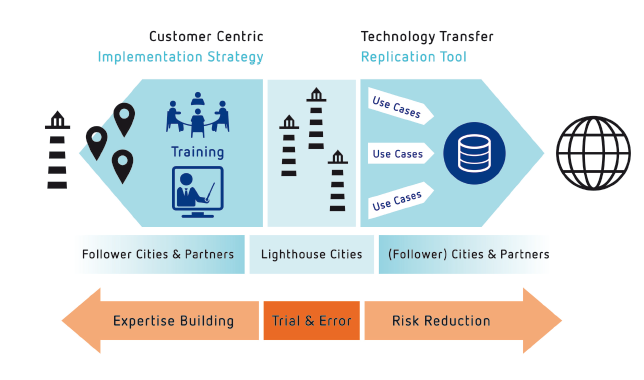
Aim of the ICT Reference Architecture
• Provide a unified view and understanding of I CT strategies
• Identify interfaces between I CT components
• Enable exchange and interoperability of components/solutions
• Enable the replication of Smart City concepts between cities
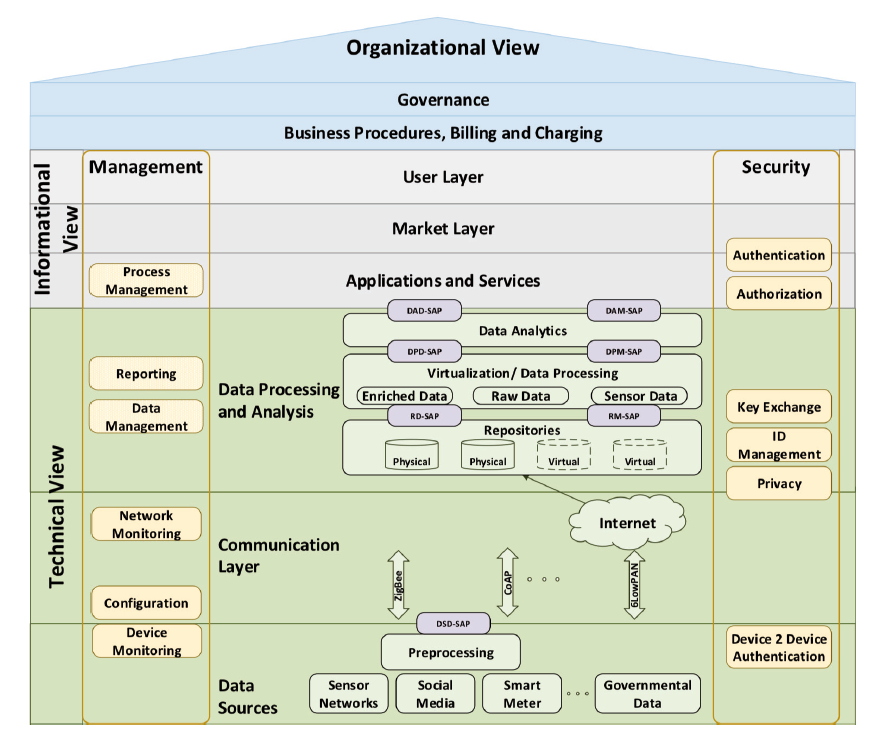
Replication Tool
As a tool for replication, Triangulum has developed the „Smart City Decision Making Tool“. The aim of this tool is to foster replication of Triangulum Use Cases by enabling cities to find relevant examples from Triangulum that fit their needs.
Information included:
• Description, location, time taken for planning and implementation, public participation model, business model details, stakeholders, etc.
• Additional insights gained from implementation like lessons learned and supporting factors
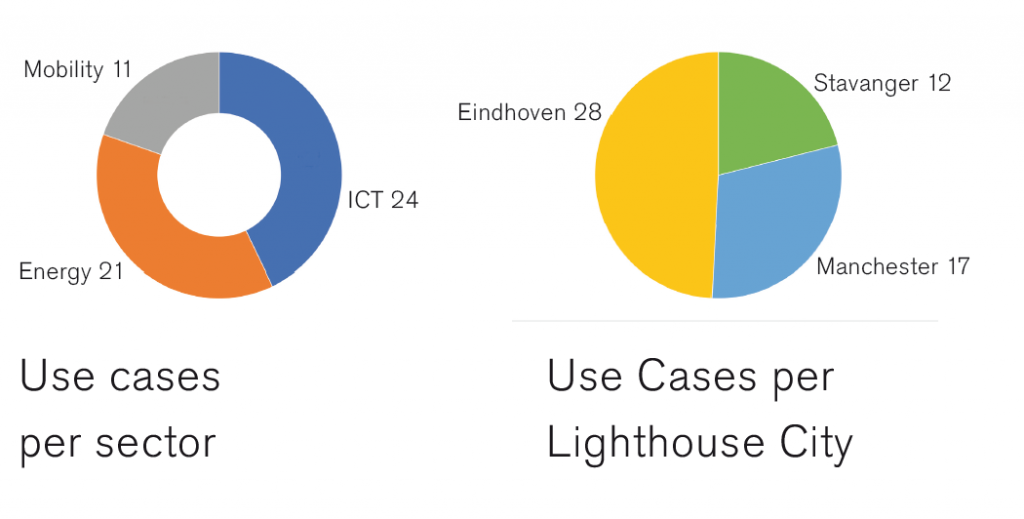
As an example, the replication of the Use Case Blink was a real success story for Triangulum. The local Stavanger partner Lyse AS invited interested stakeholders from the consortium to Stavanger to demonstrate how Blink works and to further underline its potential. There were talks between Lyse As and the different city representatives as well as several demonstrations of the tool. After this first meeting, the stakeholders agreed to test the solution in the Triangulum Follower Cities Prague and Sabadell. There was thus a test run in both cities where minimal required adaptations were identified and subsequently realised by Lyse AS. As a result, the Use Case Blink could be successfully replicated in both Prague and Sabadell!
Triangulum Impacts
The following summary gives an overview of Triangulum impacts at the level of the demonstrators (modules), across the project as a whole, and at city level. Currently, these are still draft impacts as we are still checking and calculating final values. Look up our final impact report when it becomes publicly available (Deliverable 2.6, to be published here), which will contain further updates and details.
Module Level Impacts
257 impact indicators have been finalised across the 26 modules being implemented in the Lighthouse Cities. The overall impacts in the Lighthouse cities are as follows:
For Manchester, energy trials in the final year carried out showing significant potential for reducing energy demand and lowering GHGs, 10,300 m2 optimised building space in MCC for smart energy interventions with over 400 tCO2e avoided GHGs, and a further 35 tCO2e avoided GHGs as a result of PV energy generation. The purchase of 10 Triangulum procured EVs has reduced GHG emissions by 35 tCO2e since 2016, and the overall impact of Triangulum has been to increase university share of EVs in vehicle fleets from 5% to 25%, with reduced GHG emissions of over 125 tCO2e, 11kg NOx, and 70kg CO. 4 cargo bikes have made 4,493 journeys and travelled 6,697 km over a three year period and saved 820 kgCO2e. The Manchester-I data platform hosts 9 real time data feeds and has 4 organisational users and 307 users that have downloaded data 427 times. Over 50 people have attended the Innovation Challenges hosted in 2018 and 2019.
For Eindhoven, in Strijp-S, biomass and Sanergy have replaced the old heating system and provided 100% renewable energy for heating. In 2019, 14% of all energy was generated by Sanergy. 14 EV charging stations have been implemented. The fiber-optic network has been expanded extensively with 350 home connections and 7,050 office connections. 40 sensors have been installed in Strijp-S. 28 SMEs from the iCity tender have been created, and €50m p.a. additional investment has been secured from partners since 2016. In Eckart-Vaartbroek, for social housing, 11,200 m2 buildings have been renovated, reducing GHG emissions by 20%. The estimated energy bill reduction in 2019 was 55%. For the digital renovation platform of Woonconnect, 284 households (29%) used it, and 174 made a plan (scenario) for the renovation of their home. The Eindhoven open data platform has been viewed 96,000 times per month in 2019 and actively downloaded nearly 4,000 times per month.
For Stavanger, 56 smart gateways have been installed in residential buildings, and the Central Energy Plant (CEP) in Stavanger Commune has avoided a total of 500 tCO2 p.a. which represents an 87.5% reduction in CO2 emissions. 5 battery buses have been deployed by the bus operator in the city, avoiding 135 tCO2 and 250 kg CO. A design competition for the Battery buses has been effective in engaging the public and school children in the project. The Cloud Data Platform has 6 internal users, hosts 4 datasets, and currently has 35 completed impact indicators. It has been used to deliver data analytics to improve efficiencies at the local bus operator.
Project level Impacts
City Level Impacts
1. Process learning
Triangulum has led the development of the ‘process learning’ concept, which describes how partner organisations have learnt to do things in new, smarter ways. These impacts are critical in the current context of zero-carbon cities and the need to accelerate transitions to sustainability. They describe a new ‘Triangulum’ way of governing cities.
Our survey and interviews with partners revealed three priority areas to enable smart transformation:
2. Leveraged investments
Spin-off initiatives have been a major city level impact of Triangulum, and reflect the development of a deeper form of partnership working within the Lighthouse Cities.
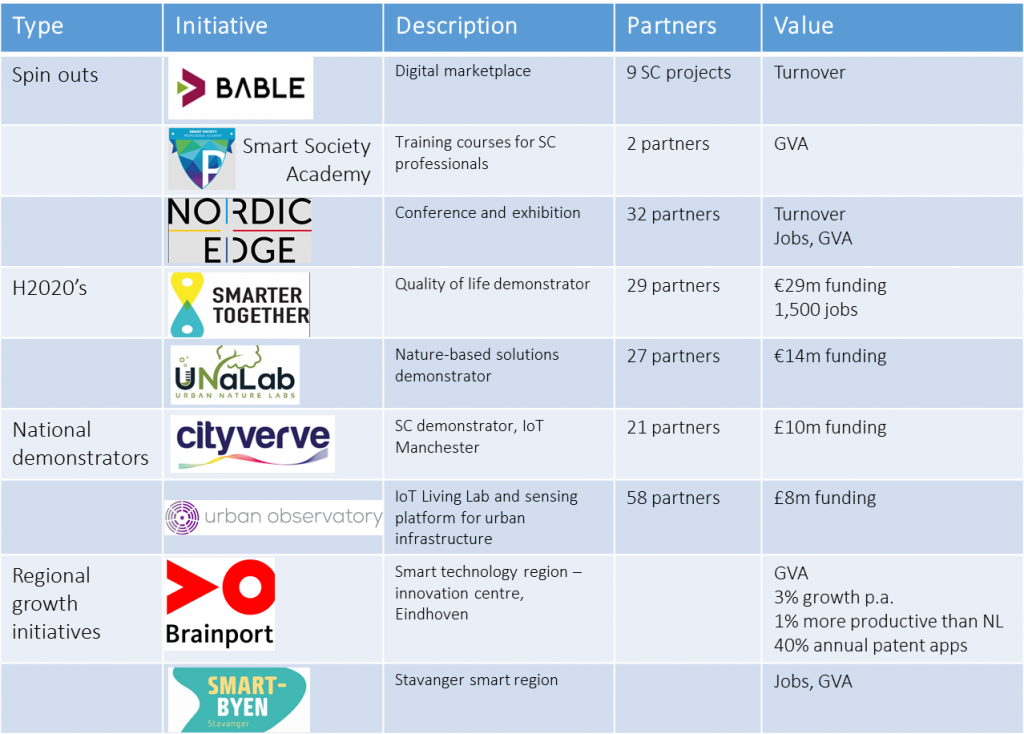
With Stavanger as a Lighthouse City of Triangulum, the Stavanger region has developed new technology and interacted across the private and public sectors to cut CO₂ emissions, to create better transport and communication solutions, and to make energy use more efficient.
With the support of Kolumbus, Rogaland City Council has implemented emission-free electric buses in Stavanger, being the first in Norway. The City of Stavanger helped establish a central energy plant that uses heat from the city’s wastewater to produce energy. The University of Stavanger has developed a data hub that can process, analyze and visualize large amounts of data. Lyse AS has developed new technologies for energy efficiency and management that have been tested in 100 homes, a gym, and a nursing home. They have also developed Blink, a video system providing secure communication on different screens. Greater Stavanger has led the communication work to spread knowledge about these local projects nationally and internationally.
The participation in Triangulum has laid the groundwork for active public and industrial engagement regarding smart cities developments. As a result, Stavanger Smart Region, a network and regular meeting arena for the 13 municipalities in the Greater Stavanger region has been formed. It has also contributed to creating an internationally renowned conference and exhibition, the Nordic Edge, as well as a national cluster, other proposals and project networks.
The University of Stavanger has initiated an international cooperation on smart city technology called CityZEN. Also, the university has become a European University as part of the European Consortium of Innovative Universities (ECIU). The new ECIU University will be based on solving challenges offered by public and private sector actors. This pilot project will concentrate on challenges related to UN Sustainability goal #11 – sustainable cities and communities. The City of Stavanger is a partner and has confirmed that they will provide three challenges for ECIU learners to be solved.
Participation in Triangulum has also led to new EU-projects such as TrAM – an electric boat that is currently being built and will operate between Hommersåk and Stavanger. Being the first in Norway to implement buses running on battery power has led to increased attention on electric buses and emission-free public transport in our region, and a process of electrifying buses in urban areas is initiated. In 2020, 17 new electric buses will become part of the public transport system in Haugesund. In addition, the Kvitsøy ferry that will start in 2020 as well will run on power from a local onshore energy distribution network and a combination of biodiesel, biogas, and hydrogen.
Lyse AS’s solution Blink has been tested in two of Triangulum’s Follower Cities, Sabadell and Prague. “The aim is that, in the future, Blink will be a trusted communications tool for several different users, specifically within health care, but also for a wide range of other purposes,” says Per Fjeld, Senior Advisor at Lyse AS.
As a result of energy management tested in 100 homes, 10-20 of these will continue to use the smart panel and establish a customer-relationship with the Lyse AS brand Smartly.
Elnett 21 is another project that Lyse AS will be part of during the next couple of years. This project aims at creating an energy system of the future, exploiting flexibility between large energy users, which in this case are an airport, a harbor, and an industrial park. Lyse has also been able to contribute actively in another H2020 project called INVADE, developing future solutions for distributed storage and flexibility in the energy market.
The central energy plant will continue to be the primary source of energy for the city’s administrative buildings. To educate the citizens of Stavanger and other professionals interested in the energy plant, the city is creating an information board that illustrates how the central energy plant works. This board will be installed on the outside of the administrative buildings. It will contain a visible sign of Triangulum and the information will also be digitally available.
To further communicate the exciting projects and the results of Triangulum within Stavanger region, a web page has been developed where you can read more about each of the implementations mentioned and their respective outcomes: www.traingulum.no
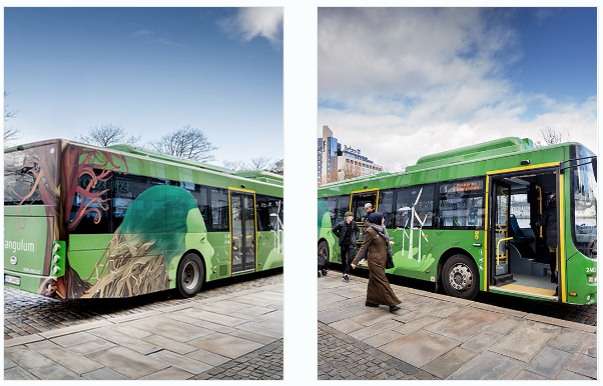
The Municipality of Sabadell has participated in the Triangulum project together with its linked third parties Habitatges Municipals de Sabadell, SA, Informàtica Ajuntament de Sabadell and Promoció Econòmica de Sabadell SL. It has received a European grant of around 400,000 euros.
Sabadell’s main outcome in Triangulum has been the elaboration of the city’s follower city implementation strategy (FCIS): •10 actions, 50% implemented on the 31st January 2020 •Based on a previous DPSIR analysis at the city level -108 indicators and action fields-, ideation and co-design work in 4-helix -3 workshops with the local innovation ecosystem in Sabadell-, and receiving inspiration and training of the “lighthouse” cities -2 visits, 6 workshops, >10 webinars- and all the Horizon 2020 SCC-1 cities. •Overall around 500 local stakeholders have been involved during the project
Focus on the main FCIS implemented actions:
•Cross-cutting real-time IoT data integration complying with the Triangulum ICT reference architecture (“Sentilo” open-source software). “Beta” version available at http://sentilo.ajsabadell.cat
•LYSE’s “Blink” social & health remote care technology tested with 5 users of AVAN, non-profit Association Vallès Friends of Neurology, to be scaled-up to other Sabadell health/social local providers
•Virtual reality bike tour through Sabadell with the goal of urban mobility training / participatory urban planning (under study, advanced stage)•
•Purchase of 67 e-cars/e-vans and 11 e-bikes/e-scooters during 2018-2019
•Sound sensors at the city centre public space to detect criminality/incivilities, connected with existing surveillance cameras and public lighting, and alerting the Local Police (under study, advanced stage)
•MOD3L, 1st prototype of a digital and physical 3D model with Sabadell geodata, elaborated by students of the Technical University of Eindhoven and the Autonomous University of Barcelona
•1st. purchase of equipment for a new maker space in Sabadell (high-quality laser cutter, graphic design software, computer), installed at the local School of Carpentry
More information on the Triangulum implementation in Sabadell: http://web.sabadell.cat/triangulum

Prague’s main outcome is its Follower City Implementation Strategy, which comprises a collection of measures that were identified and developed during the Triangulum project. The measures are predominantly focusing on the development of the Smart Home Care pilot project in the district of Prague 7, but also includes a city-wide measure of a 3D-model and a cookbook about the culture of cooperation in the smart city development as such.
Outcomes of the Prague Implementation Strategy
Part 1
Smart Home Care Pilot Project
The Prague 7 Smart Home Care pilot project aims to increase the quality, availability and efficiency of services offered to senior citizens in their home environment using innovative technology. The following measures (that were defined as part of a participatory process with local stakeholders) focus on complex solutions in assistive technologies, ICT, energy efficiency and e-mobility.
The system will consist of an integrated data platform, the digitization of the care center and the implementation of the case management: a collaborative process of assessment, planning, facilitation and care coordination. For this, a series of educational workshops took place in 2019. Next steps are currently being planned with the city hall and smart city organizations.
It is planned to create an informative website which can serve as a marketplace of services for seniors and their peers. As a first step, the existing webpage of Prague 7 is currently extended with additional information.
There has been pilot testing of the Blink video communication device developed by the Stavanger partner LYSE AS, together with local service providers for seniors in Prague. The test lasted from 14.08.2019 – 31.12.2019. Its aim was to promote the benefits of smartification of households and to test its use in the Czech context.
At the end of 2019, the care center purchased an e-car to transport staff and lunch to clients. The purchase of a second e-car is planned for 2020.
Prague 7 has the aim to design its public space in a more age-friendly manner and to improve the accessibility of the most frequented destinations of the journeys of senior citizens in Prague 7. After a mapping of barriers in the public space with the help of elderly citizens, measures such as new benches will be implemented in Prague 7.
An educational showroom will provide instructional videos and information material to explain the use and to eliminate misconceptions about the available technologies of medical and compensatory aids and its potential benefits. It will be opened in January 2020.
Part 2
Update of Prague‘s 3D Model
The new system has been implemented and a web presentation of the city model has been launched.
Cookbook / Interactive Exhibition of Culture of Cooperation
The cookbook presents the eight main principles leading to a constructive mindset and open approach which have been identified as the decisive factors for a successful initiation and effective management of smart urban development projects. These principles were identified during on-site visits in the three Lighthouse Cities of Triangulum:
The cookbook is supposed to convey the experience and the dynamics of successful civil servants and teams from the partner cities of Triangulum. The goal is to cultivate cooperation, a positive approach and a culture of openness and communication.
The cookbook will be available online and offline. The online version will be an interactive web page, informing about the interactive installation and explaining the eight principles as an outcome of the Triangulum project (www.urbania-vystava.cz; CZ only). The offline version is an interactive installation URBANIA which will be accessible for one month (16.01. – 15.02.2020). Here, visitors can learn about and experience the different principles, which will be communicated in a visualized, interactive and storytelling way.
In addition to this catalog of measures, which partly have already been implemented, further outcomes of Prague as a Follower City of Triangulum are:
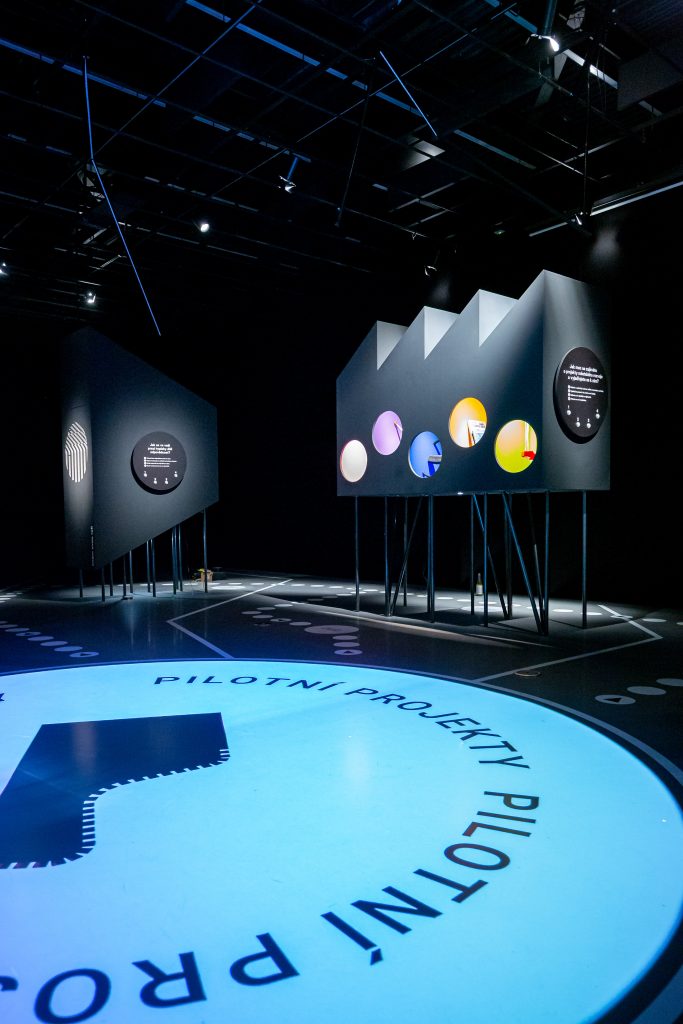
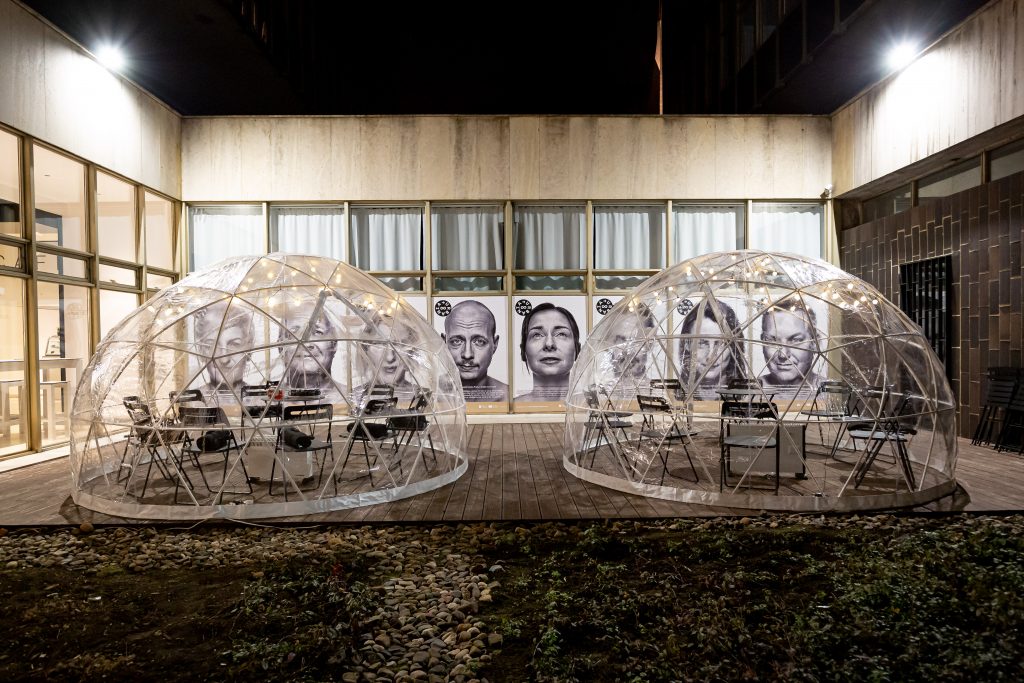
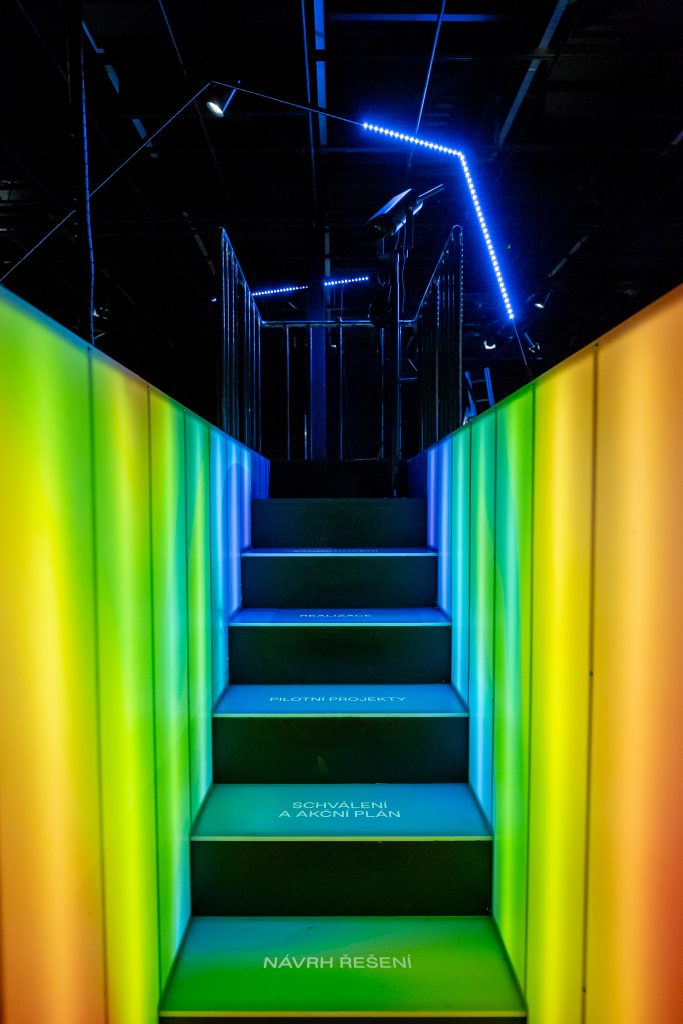
For Manchester, the achievements focus on developing energy storage combined with solar PV, optimising existing buildings, a study of microgrid independence, as well as a roll out of electric vehicles and “try-out” e-cargo bike scheme. Data from all of these has been incorporated into an open data platform – Manchester-i.
Innovation Challenge
All the Triangulum assets generated data but how can the city use it to make decisions and manage the city? Innovate4Manchester was a collaboration between the Triangulum Manchester partners, Ordnance Survey (the UK’s national mapping agency) and their Geovation Team plus the Open Geospatial Commission. The work an improved 3D city models of the city’s innovation district and workshop for different city departments to draw up a “wish list” on city issues.
A final event was an innovation challenge where participants were supported to generate and develop potential solutions and innovative ideas based on the city stakeholder workshop and the 3D model.
A new Manchester Observatory
Post project the Manchester-I platform will become a data solution for the Manchester Urban Observatory. The University of Manchester has been successful in obtaining funding for this as part of a UK wide project focused on the digital capture, mapping, sensing and monitoring of urban infrastructure systems. Funded by EPSRC as part of UKCRIC, the mission is to create an integrated research capability to underpin the renewal, sustainment and improvement of infrastructure for UK cities.
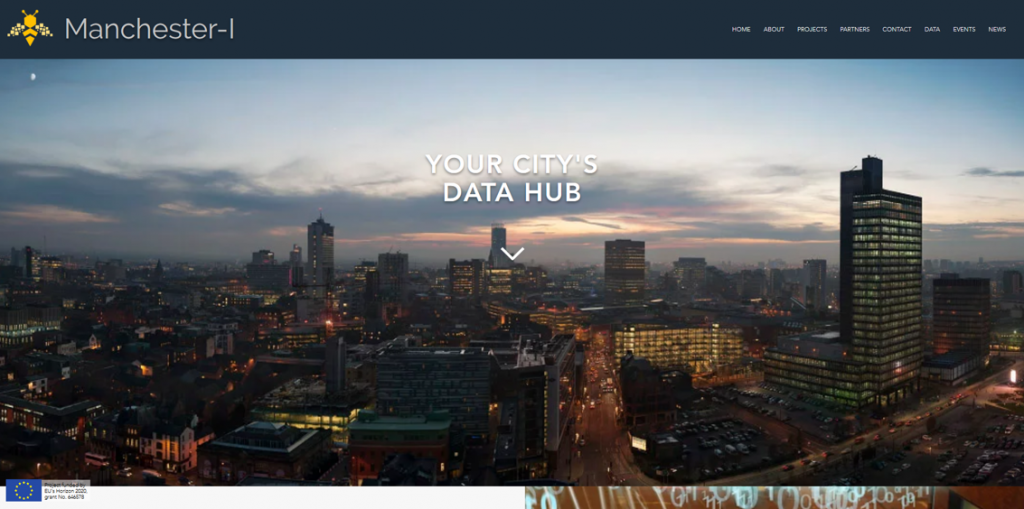
Main impact of Triangulum in Leipzig
During the duration of the Triangulum project and the resulting knowledge exchange with the three Lighthouse Cities, it became clear that Leipzig needs to reorganise its internal working structures regarding Smart City and digitization issues. Starting in spring 2018, a dialogue has been initiated between the Department for General Services, the Department for Economic Affairs and Employment, the Mayor’s Office and the Triangulum team to develop a new administrative structure for digitization issues within the City of Leipzig. As a result, a “Digital City Unit” was installed in the Department for Economy and Labour in April 2019, which was then renamed to “the Department for Economy, Labour and Digital Affairs” accordingly.
The “Digital City Unit” started its work in April 2019. An entire team now works on developing guidelines, drafting projects, creating different committees and networks within and outside the municipality as well as other topics.
The new Digital City Unit is:
The participation process with its three different formats established within Triangulum (Future Forum, Future Expert Lab and local citizen engagement) contributed strongly to the acceptance and the understanding of smart city processes within the City of Leipzig. Furthermore, the context of these events was used to seek support from relevant stakeholders such as the city’s utilities company for some of the project ideas. It is planned to continue the Future Forum after the Triangulum project has finished.
The City of Leipzig is on its way to becoming a Smart City. The Triangulum project had a very relevant impact on the propulsion of the topic within the city’s municipality and among Leipzig’s citizens. Along the way and with the help of an extensive participation process, relevant stakeholders from industry and science could be involved in the development of new solutions, which form the basis of Leipzig’s implementation strategy. The approval of two new projects (EfficienCE and SPARCS) not only offers the financial support needed for the implementation of the planned activities but also constitutes a valuable measure to secure and intensify the cooperation between the City of Leipzig, its public utilities, local universities and SME’s and, most importantly, to further broaden and deepen the European exchange and replication of cities shaping the digital transformation.
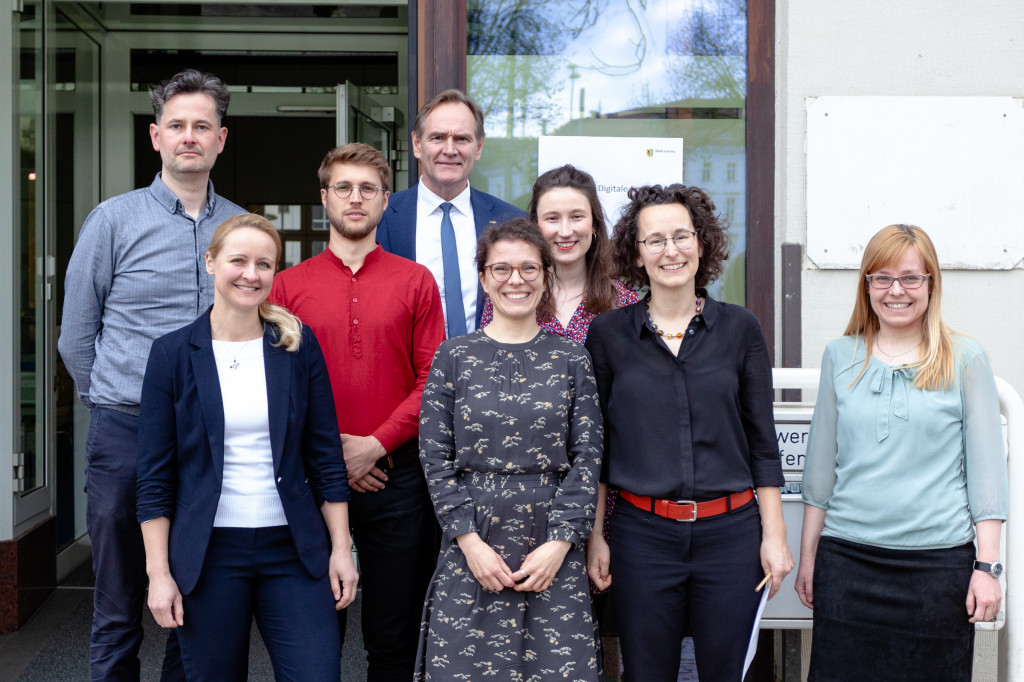
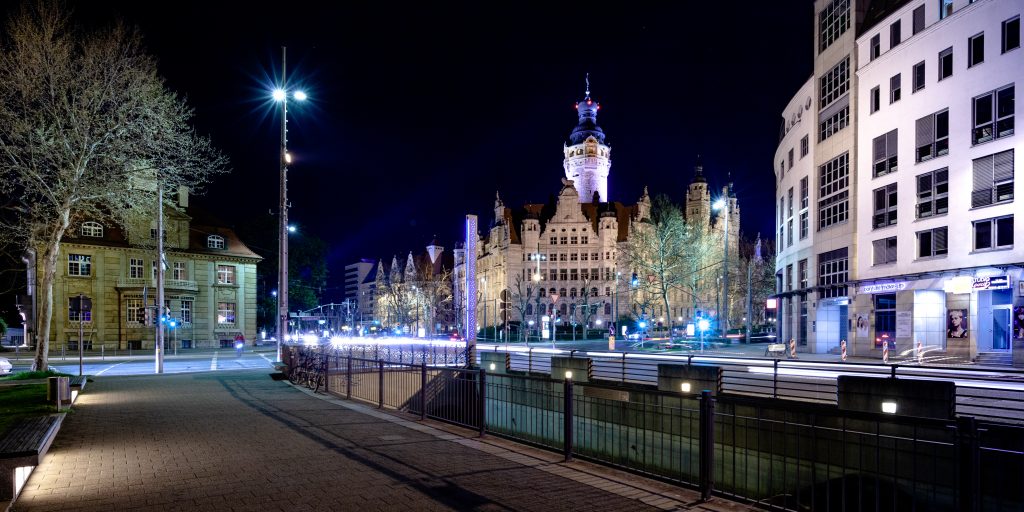
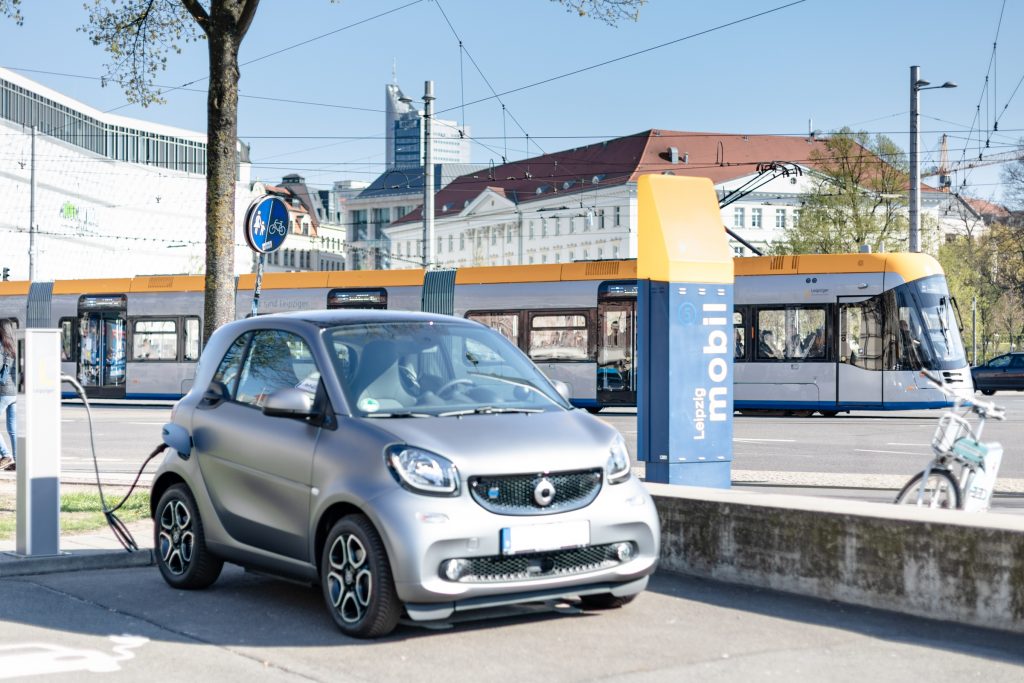
Lighthouse City Eindhoven
In Eindhoven, two districts have been transformed into living labs during the Triangulum implementation: Strijp-S and Eckart-Vaartbroek. The former Philips industrial complex Strijp-S has now a district-wide ICT solution to allow residents to access different kinds of infrastructure, such as booking electric vehicles. The IT-based tool helps residents to develop sustainable patterns of energy and mobility behaviour. A different set of challenges is posed by the Eckart-Vaartbroek district, where energy-efficient renovations are carried out on rental and privately owned houses. To precisely calculate the energy savings, the mobile app called WoonConnect is capable of modelling costs and savings. Just around the corner of these houses, a running route around two ponds was launched in 2017 to encourage residents to move and to be active.
Backbone at Strijp-S
In Strijp-S, Triangulum focusses on energy, mobility and ICT. Here, a fibre-optic backbone functions as a Smart City connectivity enabler, welcoming different services into a secure and manageable environment and making sure that dataflow/transport is at its highest possible availability level (currently 99,82%).
Traditionally, we see mobility as separate solutions delivered by different partners and via different portals. At Strijp-S, we decided to make the shift towards mobility as a platform. In short, we bring in a local brand that takes care of offering all types of available mobility solutions on both an on- and an offline platform. In Strijp-S, we implemented another tool for energy saving in combination with increased comfort of office-space by adding hard- & software (sensors, actuators, user feedback and data-analytics) on top of traditional energy systems.
Renovations in Eckart- Vaartbroek
Woonbedrijf developed an interactive process, including the digital tool WoonConnect, for tenants to take renovations into their own hands. They are able to choose the energy saving measures as well as e the starting date of the renovation. To make this possible, with the help of WoonCoonnect, a customer journey is made to guide the tenant through the process. In general, the digital tool is easy to use. But for tenants that are not able to do so, for different reasons, guidance is available. At this point, 195 houses have been renovated, that is, 76% of the neighbourhood. So far, 875 solar panels have been installed. The work will continue in 2020.
Running Route
The municipality has implemented a running route around two ponds and placed dimmable lights on the right side of the southern pond. One of the main advantages of the smart running route around the ponds in Eckart-Vaartbroek is that people are encouraged to move and to be more active! But also: residents interact during walking or while exercising, such that they get to know each other, enhancing the social control in the neighborhood as well.
Next steps
We will continue working in the quadruple helix at organization and management level, as we do successfully in the Brainport region. Woonbedrijf and the municipality will continue involving tenants and inhabitants to actively participate in projects. As a spin-off of Triangulum, the Urban Data Center and the Urban Data Platform (https://data.eindhoven.nl/pages/home/) of the municipality has been developed. Also, participation in the project Synchronicity, which ended in 2019, is an outcome of participation in Triangulum. Woonconnect is already used in other cities to stimulate homeowners to take energy saving measures. Lessons learned in area development in Strijp-S will be applied in other developments like in the city of Zwolle.
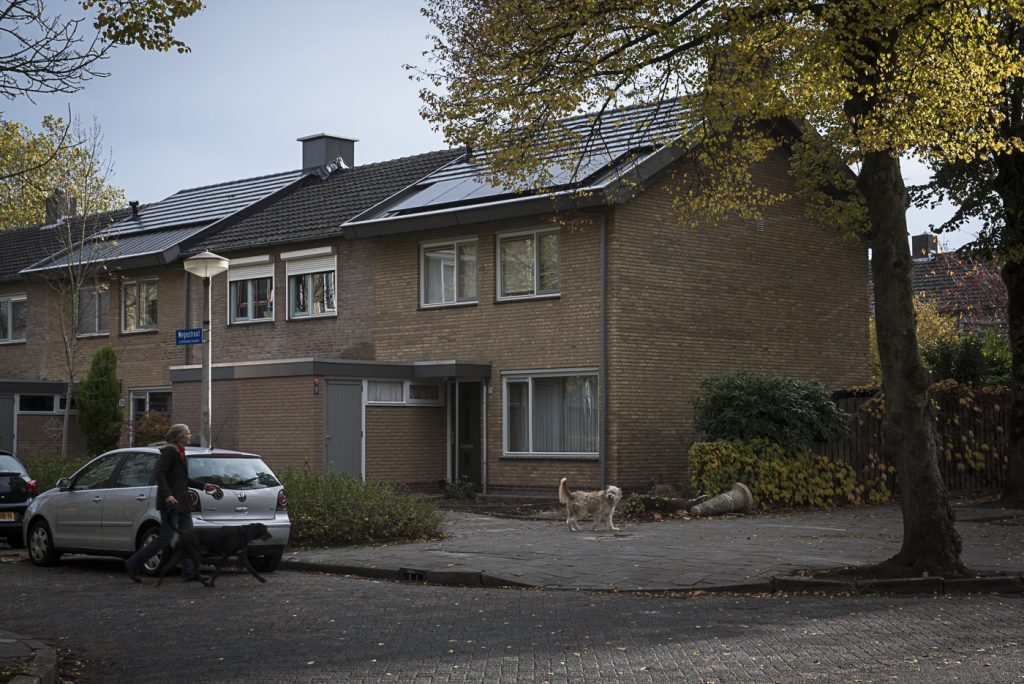
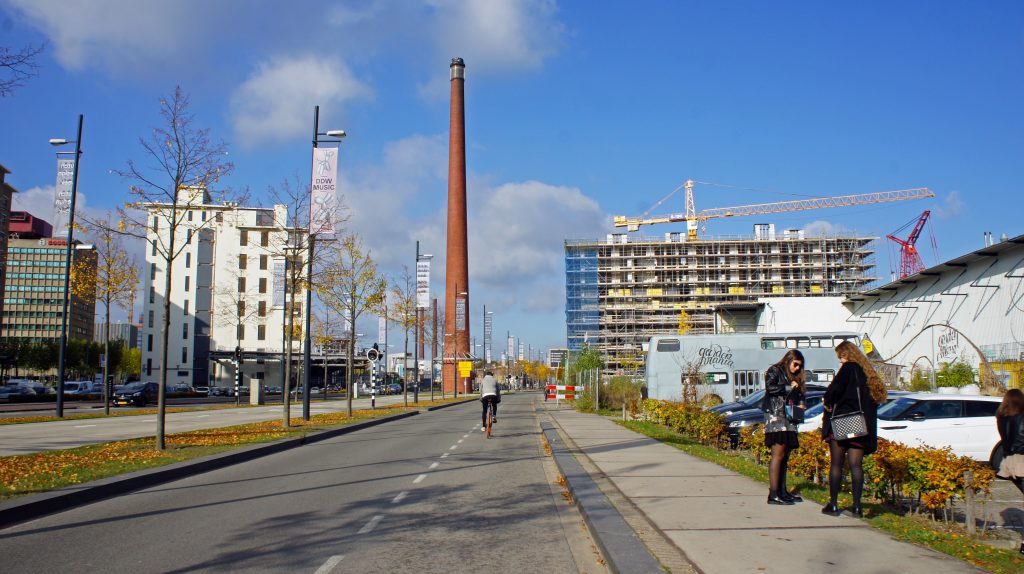
The final webinar of Triangulum “The Wider Impacts of Triangulum” took place on 28 January 2020 at 10 AM (CET). Speakers and their respective presentation titles were:
• Professor James Evans – Insights from 5 years of monitoring the Triangulum project
• Dr Kelly Watson – An overview of Monitoring and Assessment at Month 60
• Dr Dujuan Yang – Involving residents in monitoring energy retrofit projects
• Joe Lake Rees – Insights from combining SCIS with Triangulum
The webinar covered a brief overview of Triangulum, providing insights from its final year in terms of key lessons learned, leveraged value and other benefits, replication potential, etc. The webinar presented the monitoring and assessment framework and results from the final year and an example of how to involve residents in monitoring energy retrofit projects. Finally, an overview of the Triangulum experience with SCIS was given, including challenges of integrating this into a live project.
A recording of the webinar can be found at our “Webinar” section or our YouTube channel.
Presentations will be uploaded soon.
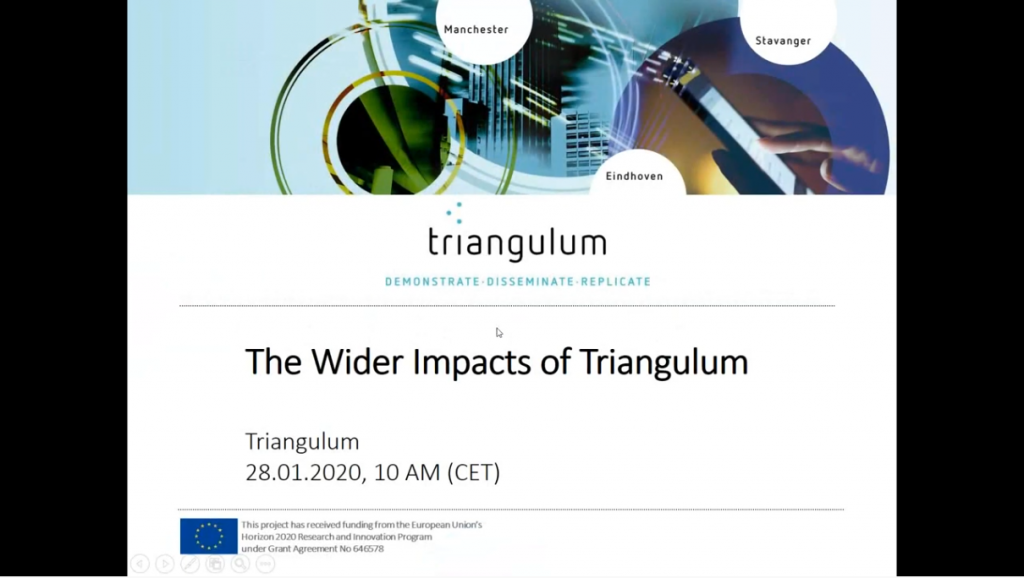
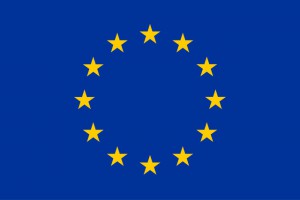
This project has received funding from the European Union’s Horizon 2020 research and innovation programme grant agreement number 646578
Steinbeis-Europa-Zentrum
Willi-Bleicher-Straße 19
70174 Stuttgart
Germany
